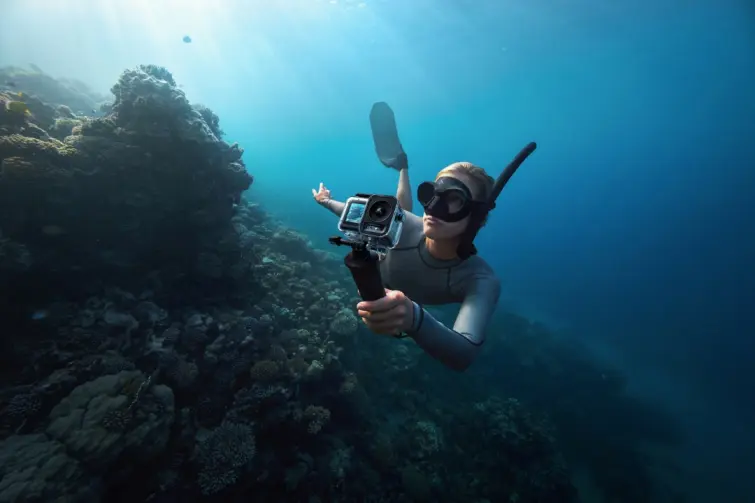Beyond the Lens: A Guide to Capturing Ocean Stories with Your Action Camera
- Danel Wentzel
- Aug 11
- 3 min read
There’s a myth in the world of photography that a creator is only as good as their equipment. I’m here to tell you that this is the furthest thing from the truth.

In the vast, humbling expanse of the ocean, the most powerful tool you have is not a camera, but your own eyes, your presence, and your ability to tell a story. I’ve spent my career capturing the raw, breathtaking chaos of the ocean, and for so much of it, my camera of choice at times has been a simple, pocket-sized action camera—the kind you can take anywhere, from a kelp forest to a baited shark dive.
The modern action camera, like the GoPro Hero 13 or DJI Osmo Action, has become a titan in a tiny package. With features like next-generation stabilization and incredible low-light performance, it has a video and image quality that rivals cameras ten times its size. It’s a tool built for adventure, and with a few simple techniques and accessories, you can use it to cr
eate powerful, cinematic stories from the depths.
Know the Story You're Telling

An action camera is designed with a wide Field of View (FOV) to capture the grand scale of an adventure. This means it has a minimum focus distance of about 30 cm (12 inches), making it perfect for capturing a passing whale, a curious turtle, or a mesmerizing school of fish. It’s an ideal camera for telling the story of an entire ecosystem, of the vastness of the sea, and of your place within it. It’s not built for the intricate detail of a nudibranch or the delicate patterns of a coral, and that’s perfectly okay. Instead of chasing the macro, let it push you to capture the bigger picture.
The Art of Buoyancy and Presence

Before you ever press record, the most critical skill to master is your own body in the water. Good buoyancy control is the foundation of every great underwater shot. Moving slowly, methodically, and with control not only allows you to keep your camera steady for clean, crisp footage but also prevents you from disturbing the marine life around you. Mastering this doesn't happen overnight; it’s a practice of presence and patience. Don’t feel discouraged—this is the first step to becoming one with the ocean, and it’s more important than any camera setting.
Just Add Light

In the ocean, every meter of depth steals a little bit of color from the world. A vibrant, coral reef at the surface can look dull and gray in deeper water. Light is a crucial tool that can bring back the warm colors and life that are lost. While staying shallow and shooting with the sun behind you is a great technique, adding a simple wide-angle floodlight will make your subjects "pop" and reveal the true magic of the underwater world. It's a simple accessory that unlocks a completely new dimension to your storytelling.
The Power of a Few Accessories

Your camera is a tool, and accessories are how you expand its creative potential. While your camera may be waterproof out of the box, a dedicated underwater housing is essential for deep dives and provides crucial protection against knocks and drops on the boat. A sturdy handle or grip will significantly improve the stability of your videos, while a simple floaty can be the difference between losing your camera forever and a minor inconvenience. And for those breathtaking, half-in, half-out split shots, a GDome is a game-changer, allowing you to tell a story that connects the world above the waves with the world below.
The Final Frame: You
Great footage is only half the story; editing is where you bring your narrative to life. Simple apps like Quick (by GoPro) can instantly colour-correct your images or stitch together short clips, while more advanced software like Adobe Lightroom gives you full creative control.
But before you dive in with your new gear, always remember this one crucial rule: Your safety is the most important thing. No shot, no matter how perfect, is worth getting distracted and losing your buddy or getting caught in a current. The greatest story you will ever tell is the one you live to tell, and the most important thing you can bring back from an expedition is your own well-being. The camera is a tool for memory, but the memory itself is the greatest treasure.



Comments